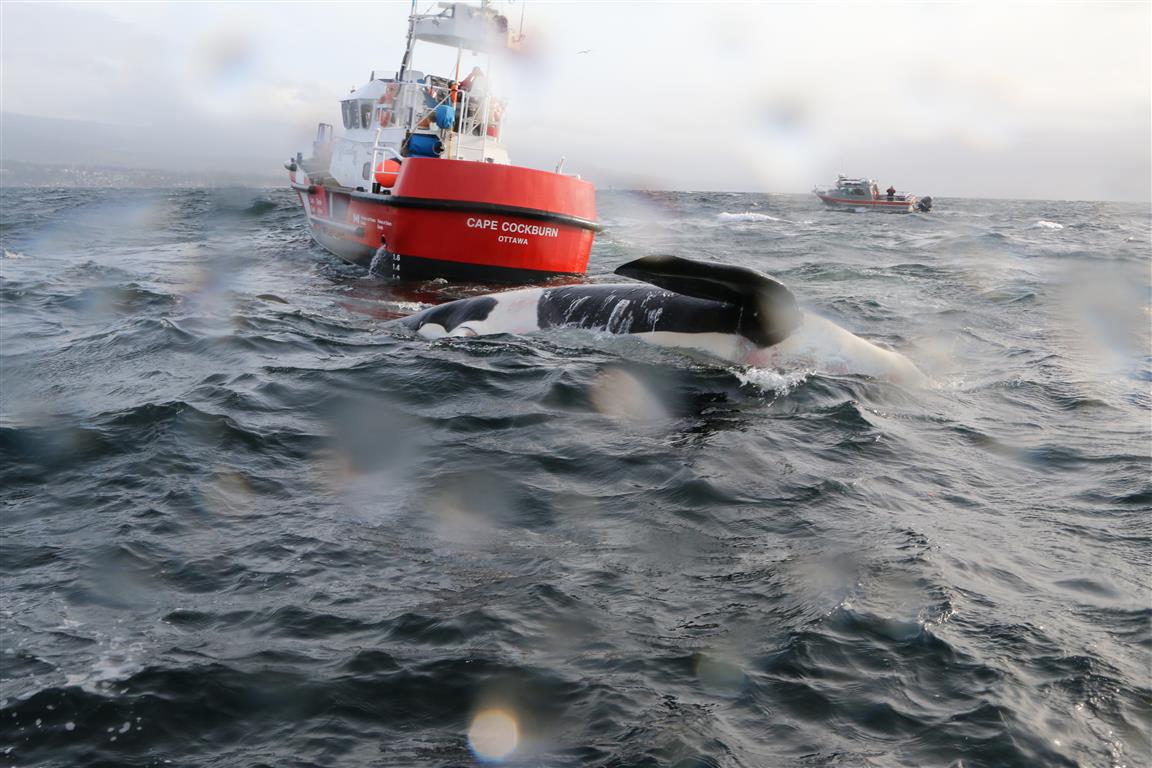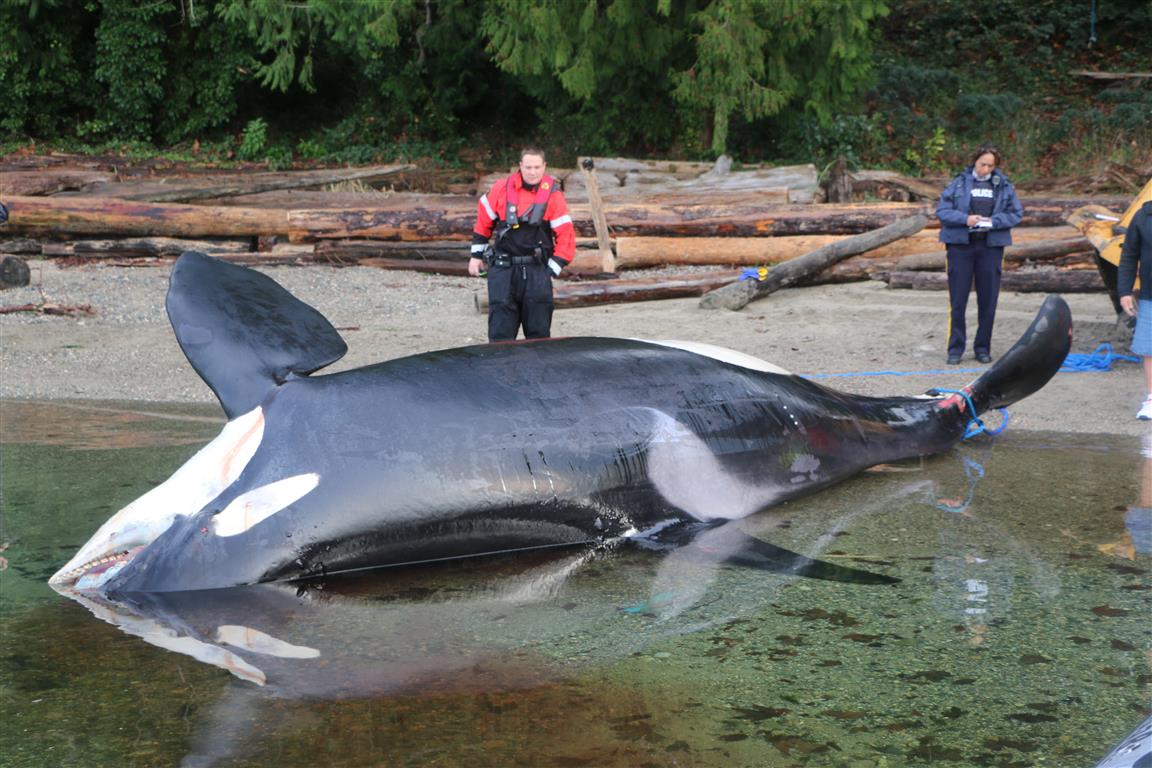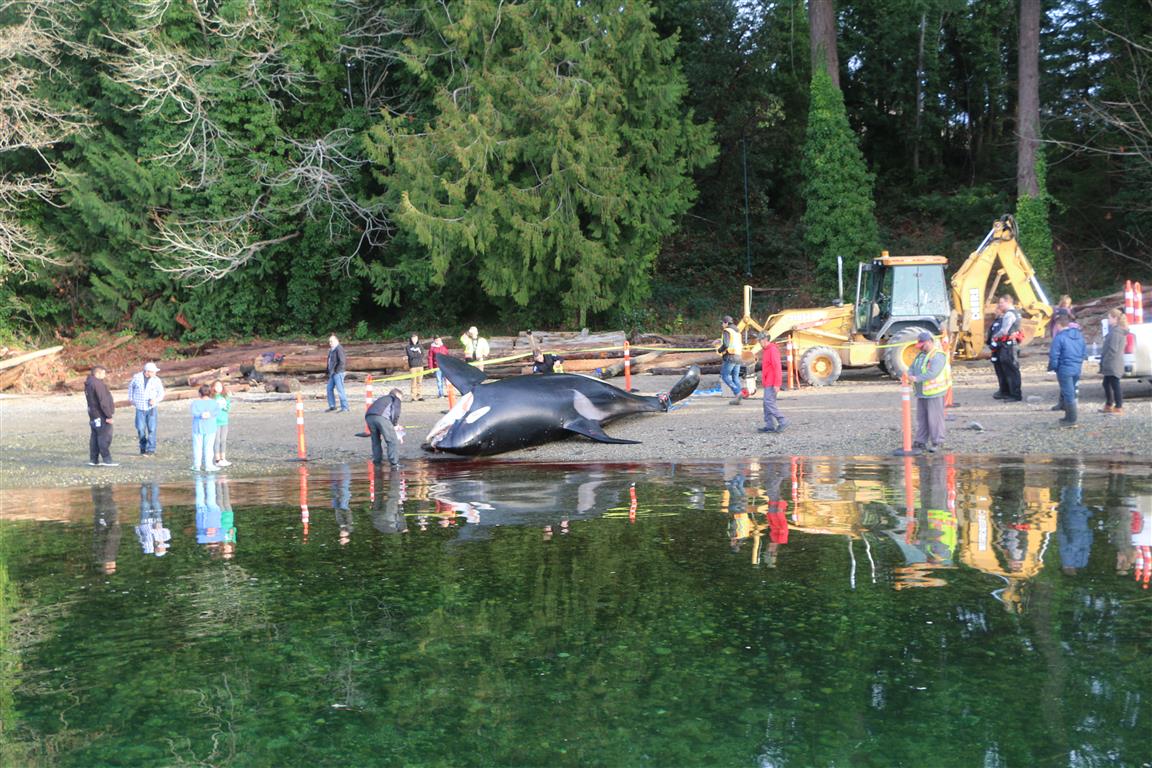Marine researchers are trying determine what caused the death of a male killer whale found near Sechelt on the Sunshine Coast on Wednesday.

Paul Cottrell, the Marine Mammals Coordinator for Fisheries and Oceans Canada (DFO), says they received a report of a dead whale on Dec. 20 when local residents called their 24-hour hotline.
The next morning, a team of researchers from DFO and the Vancouver Aquarium was dispatched to look for the whale.
After an extensive search in choppy waters, the team finally tracked the carcass down.
The dead whale has been identified as 18-year-old southern resident J34, who was well-known to researchers.
PHOTO GALLERY: Courtesy of Fisheries and Oceans Canada.
Cottrell says they managed to get the necessary experts together to do a necropsy the same day.
It appears J34 sustained blunt-force trauma to his head and neck. Cottrell says the injuries are recent and could have been a contributing factor in the whale’s death.
The preliminary examination also showed the animal’s general body condition prior to death was good, but the full pathology report will take months to complete.
The southern resident killer whales are a clan of about 80 orcas that live in the waters off southern British Columbia and Washington State.
It’s an endangered population that’s now down to 79 species.
“It is very significant when we get a death in an endangered population,” said Cottrell. “So this necropsy will hopefully provide more information on the cause of death.”
The 22-foot carcass will be re-purposed by the Sechelt First Nation for social and ceremonial purposes.












Comments